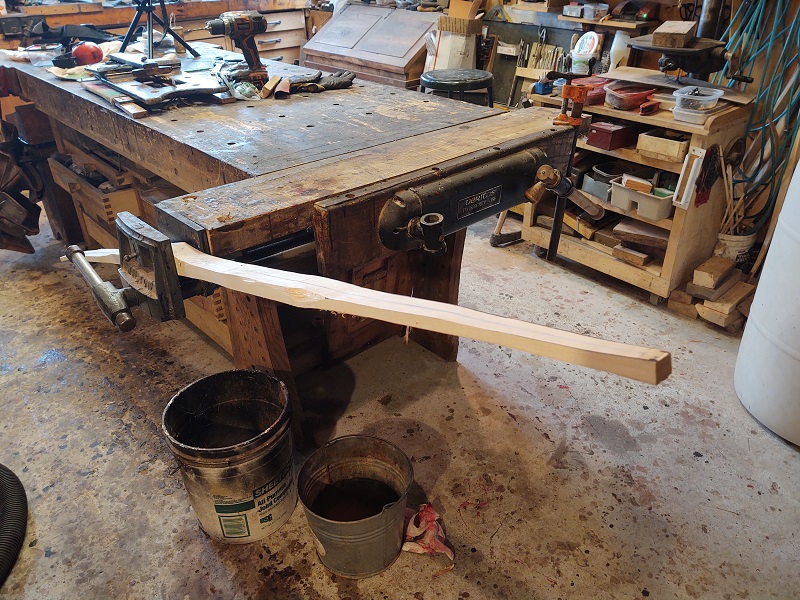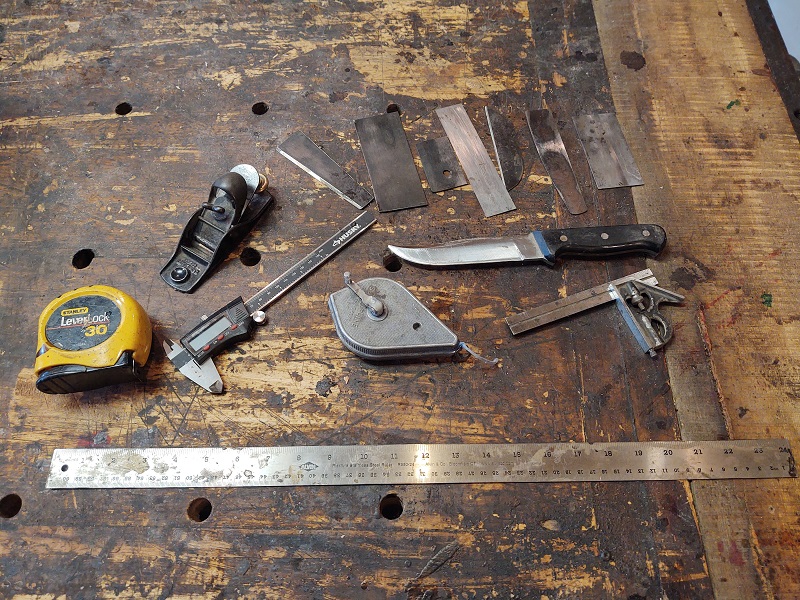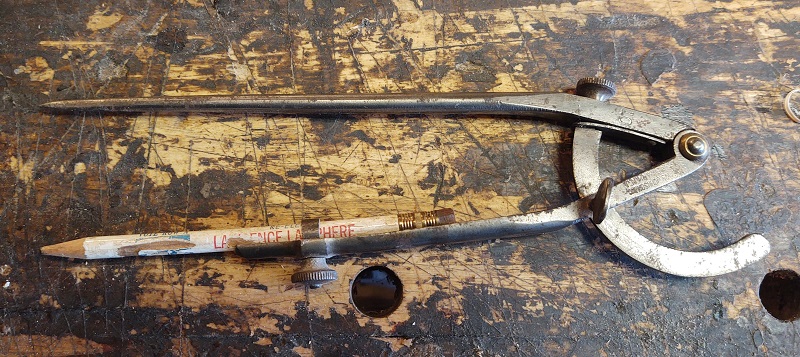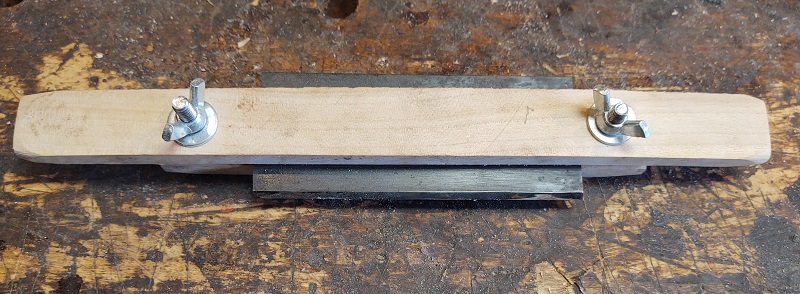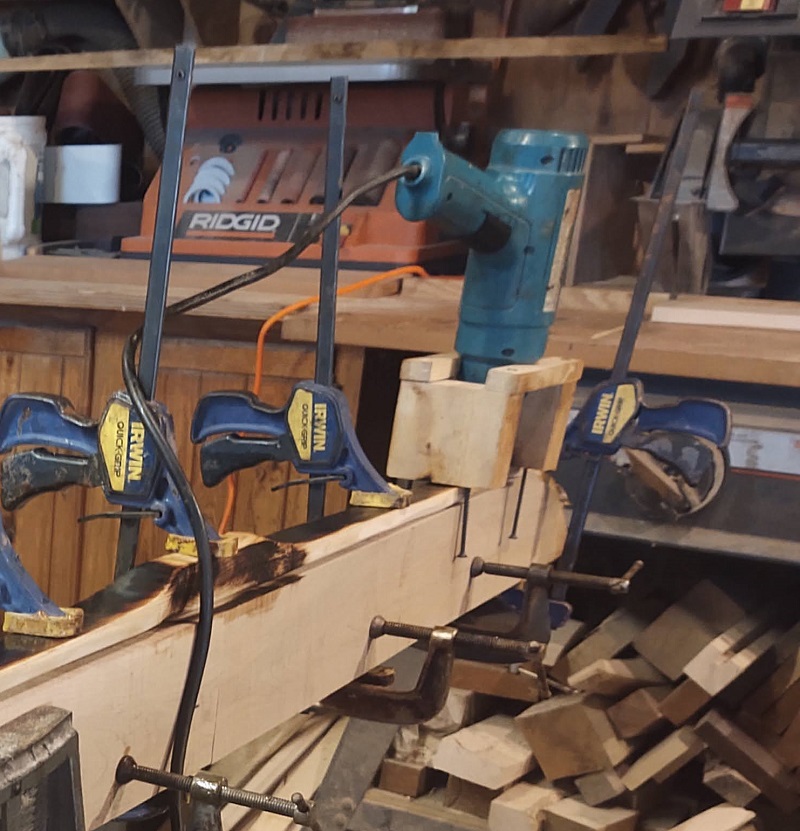My Bow Making Advice
Choose a wood you can easily get for your first bow(s). Almost any hardwood will make a bow, but the chances are the first few will either break, or be to light, or something else, so crap and easy is the best way to start. If you can get a great wood, like Osage, hickory, hophornbeam, oak or others, your off to a great start.
Bow woods, by Tim Baker | Trad Talk Forums
BOW WOODS (FROM A MATHEMATICAL PERSPECTIVE)
How to Choose the Board for your Board Bow
On Drying the stave (“George Tsoukalas” I like 6-8% for hickory and 8-10% for all other woods.)
Here is George’s web site (excellent resource) –> You may find what works for you different based on your location, climate, temperature and time of year, but this gets you in the ball park.
Here is my DIY drying cabinet—>
Follow George’s layout instructions –>
Follow this for your first bow: Tim Baker’s instructions on making your first bow–>
For books here are my suggestions—>
When tillering:
- never draw the bow beyond the intended draw weight. If you want 45#@28″, never pull more than 45#. I usually stay 5# below to be save, so for 45#, I try not to pull over 40# until the very end.
- never pull past your draw length. That’s a good practice even after tillering.
- Never remove wood to reduce weight. Just keep perfecting the tillering until the weight has been reached.
_____________________
For additional improvements
No Set Tillering
This along with the Mass Principle starting on Page 91 in Traditional Bowyers Bible Vol – 4 is worth getting to know if you want to get to a bow a little more efficient
http://www.primitivearcher.com/smf/index.php?topic=58212.0
http://www.primitivearcher.com/smf/index.php?topic=61588.0
No set tillering is a simple way of monitoring the condition of your bow that does not rely on a sense of feel. Instead we use our scales. Whenever a bow starts to take on set or takes on permanent deformation in compression we will have a corresponding drop in draw weight. Your scales will pick up on this before it becomes visually apparent. When we are bringing our unfinished bow down to its target draw weight we want 100% of its reduction in weight to come from wood removal and 0 % of its weight reduction to come from breaking in the bow which is just another word for set. No set tillering can be used on the long string as well as the braced bow.
This is how it is done. ( long string method) We get the bow bending as evenly as possible with only a small amount of tip movement. We install the long string lets say it hangs down about 6“. Assuming the bow is bending evenly we pull the bow to about 25# and carefully note where on the yardstick it was when we hit the 25#. Lets say we hit 25# at 14“. We move down one inch at a time drawing it further each time as we inch toward our target draw weight (50#). As we move down we also are looking for spots on the limb that need adjusting.
Each time we advance an inch on the long string and exercise it there we go back to our benchmark at 14“ to see if it has changed. If it has dropped that means the bow is taking set and we need to take action. Lots of reasons a bow might be taking set. Wood is high in moisture, not enough limb bending, bending too much in one place, design is too narrow for the weight you are asking of it. The obvious remedy is to figure out what the problem is. Too little mass is the most common tip off for an under designed bow.
Suppose once you get to 18“ you see a few spots that need attention and you decide to scrape some wood off. Once you are done scraping the wood go back and start over resetting your benchmark weight at 14“. Every time you remove wood you will need to reset your benchmark weight. If I am using a long string I usually do this until I hit my target weight at about 24“ and then I brace the bow and start the same process over. If your bow is taking set and you keep going with this same procedure don’t blame the procedure. The idea is that this system will tip you off as soon as set starts happening and give you an opportunity to remedy the situation.
Also good recommendations from the same thread
I have a series of weights that I hang on the string, and a tape measure mounted on the tiller tree that I can view. I start by measuring the draw length with a 25# weight. the weight only needs to be hung on the string long enough for the tape to be read. Then I repeat with the 25# plus a 2# weight for measuring a new draw length, then repeat with the first benchmark weight. I can observe differences as small as 1/16th of an inch, which equate to approx. 2 oz change in pull weight. I find it easier, as I can work directly in front of the tiller tree, rather than trying to pull from a distance and make the scale settle on a “rougher mark.
—–
Bow is at first brace, I place it on the tree and with no exercise I pull it to 20″. I carefully note the weight and the position on the yard stick. Now I exercise the bow a bit until I get it to twenty one inches. Now I go back to the 20″mark and recheck it. If it still reads the same or at least very very close. I keep increasing the draw length until I hit target weight at about 23″. Almost all final adjustments getting it to target weight at 28″are made in the inner limbs. I like as little limb bending as possible but sometimes I have to use the whole limb. Monitoring any drops in weight caused by further bending lets me know when I can tiller the existing bending limb or need to move in with my tiller to use more limb. Very small drops in weight like 1 oz are enough to tip you off when you need more limb.
I’ve received a few questions on how I work and my favorite tools. I have a 2×72 grinder. I can get pretty close with the band saw, then go to the grinder with a 36grit belt (best high speed rasp you can find). Once I start tillering the grit goes up on the grinding belts. You want to work slow, it’s pretty easy to ruin a stave with the grinder.
When I get closer I switch to a hunting knife as a scraper or a scraper, most of which I’ve made from an old saw plate. I’ve made several different shapes and sizes. I chose which ever works best on that particular stave.
I use a large draw knife to debark staves. If I didn’t have the grinder a regular vintage draw knife would probably get more work. A spoke shave works well on some staves, but not all. I’ve got a couple Shinto Rasp and cabinet rasp, all great tools but I just find them to slow for making bows.
I use digital calipers a lot. If you don’t have a digital caliper get one, they’re cheap and extremely helpful. I’m not close to an expert, but I will tell you not to worry to much about what works for everyone else and find “you’re” way. Also the different types of wood and even variations in staves or boards can make a difference in how you end up working and what you wind up working with.
Here are some of the tools I use.
Some not shown are a sledge hammer and wedges fro splitting, this saw I carry for cutting smaller diameter staves—> and of course pencils and markers. I have been known to use a hatchet for everything from sizing staves, help in splitting among other things.
Clamps. You can never have to many clamps. C clamps, Pony Spring clamps, bar clamps
Strips of inner tube like an old bicycle, car or tractor tire tube cut in 1/2″ and 1″ strips are handy for gluing backing and other odd shapes.
My Vice
My three favorite draw knives
Misc: I don’t use the block plane a lot for bow, but it happens from time to time. I use it a lot building arrow shafts. The steel ruler is flexible and has a cork back. The cork back is required but a really nice to have. I made most of the scrapers. Tape measure and chalk line is a must have. The hunting knife I typically use like a scraper.
A set of calipers are also extremely helpful.
A spokeshave is handy for some staves, especially maple.
A set of calipers are pretty close to must have
A DIY scraper holder
A 5/16″ chainsaw file and a hacksaw with this blade in it —> for cutting nock grooves for the bow string
I often use a heat gun to heat treat the belly. Make and model doesn’t matter. This to is somewhat optional.
________________
As an Amazon associate, we earn income from qualifying purchases when you click on a link. Your link clicks help us fund our website.________________



